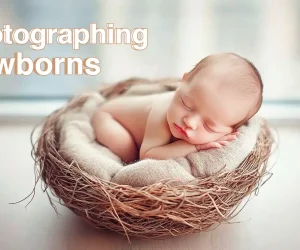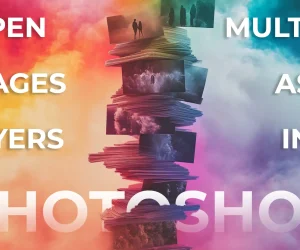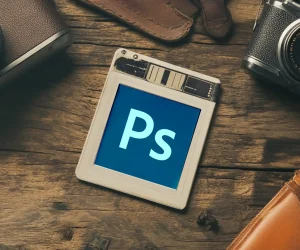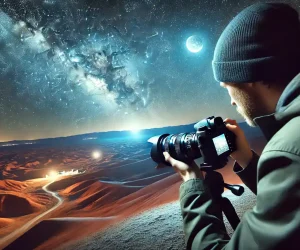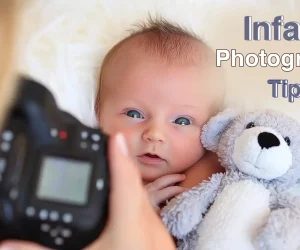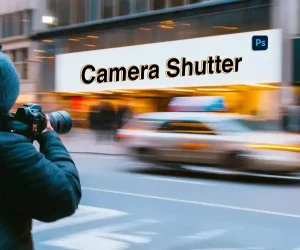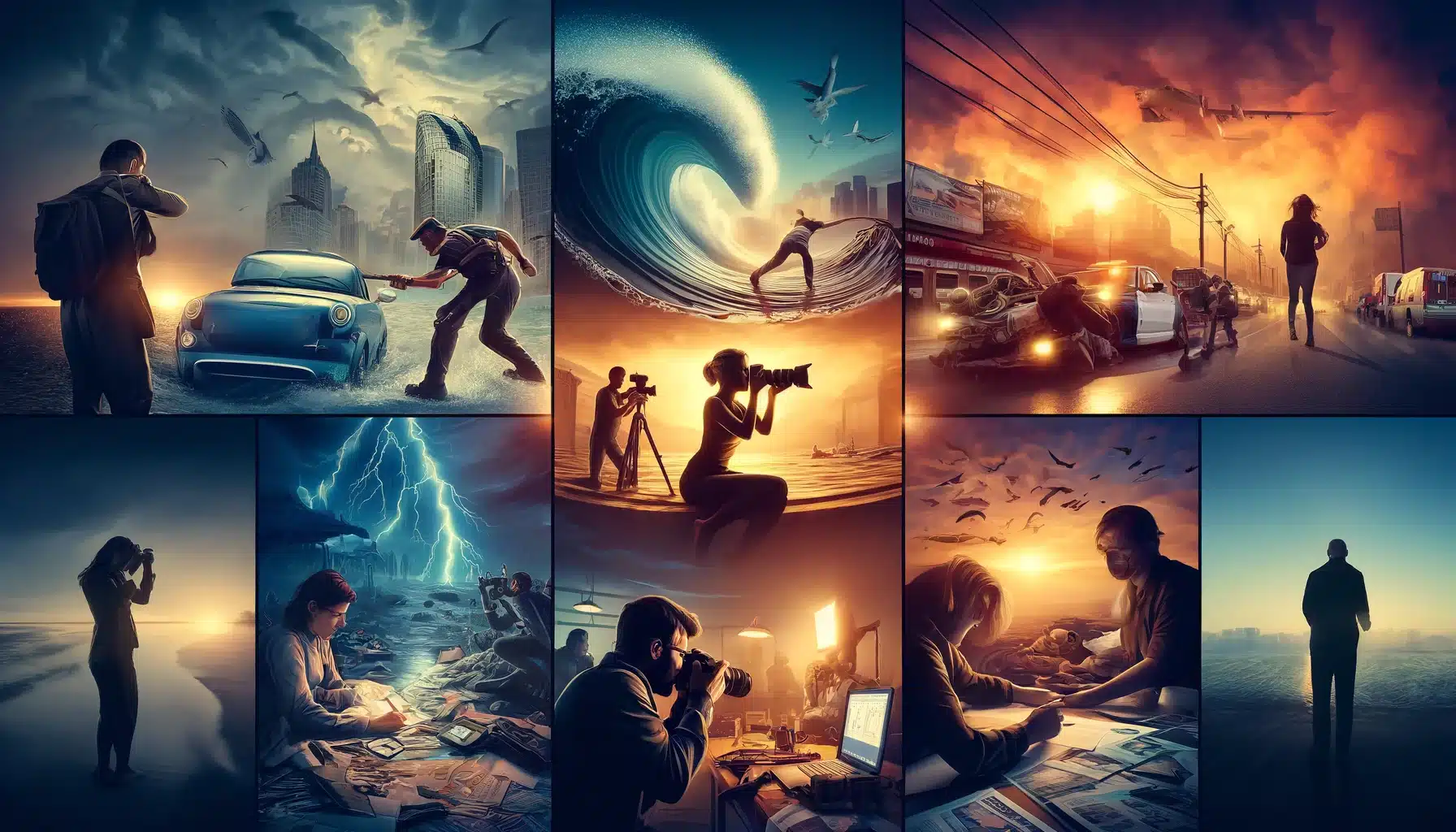
Introduction to What is Editorial Photography
You might think what is editorial photography? It’s an art form that captures stories through powerful images used in magazines, newspapers, and online publications. Unlike commercial photography, which promotes products, editorial photos and Editorial images aim to inform, engage, and evoke emotions.
These images set the scene for stories, adding depth and insight without needing words. This introduction will explore how editorial photographers use their cameras to tell compelling visual stories.
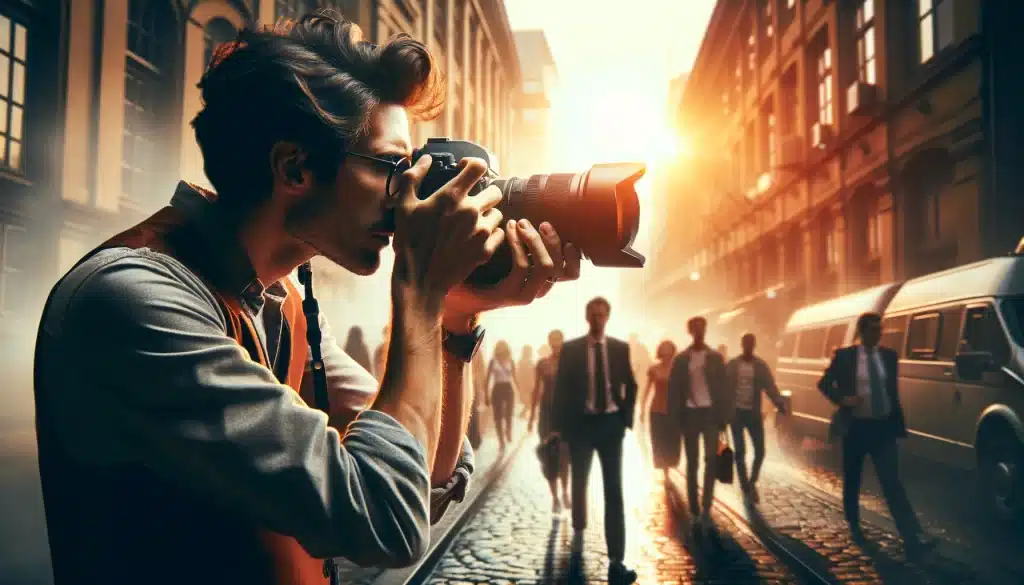
Table of Contents
Understanding Editorial Photography
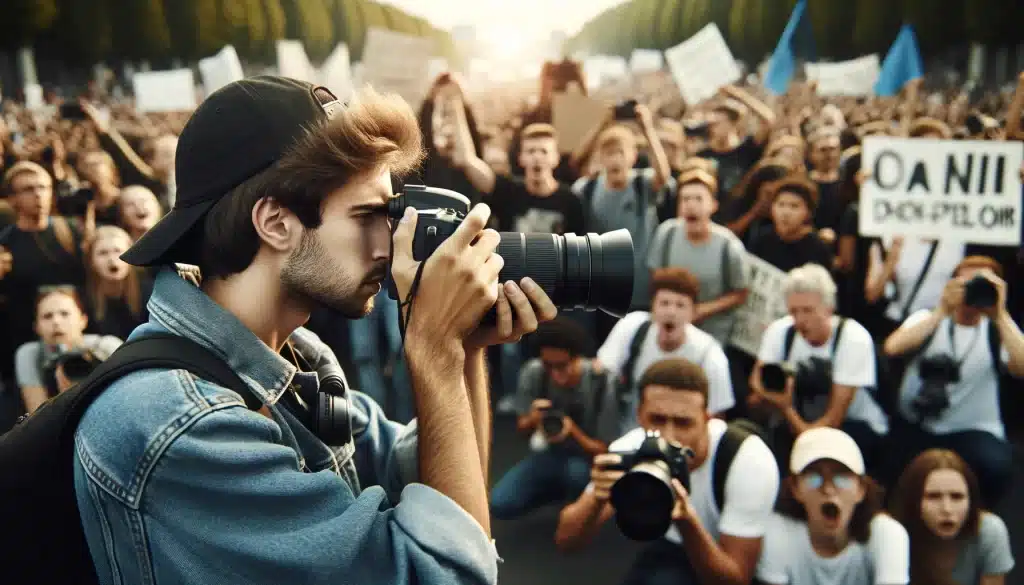
Understanding Editorial Photography involves going into the distinct way that editorial photos capture and convey stories. These editorial photos do more than just decorate a page; they serve as essential elements in the narrative structure of journalistic and creative works.
The Role of Editorial Photos
Firstly, editorial photos provide context. For instance, a photo in a travel article about Paris might show the bustling terrace of a café, not just to illustrate the location but to evoke the atmosphere. This visual context helps readers immerse themselves in the text, making the story come alive.
Creating Connection
Moreover, editorial photos establish an emotional connection. Photographers choose subjects and scenes that resonate deeply with viewers, perhaps showing joy, hardship, or triumph. This connection is vital; it draws viewers into the narrative, prompting them to read and engage more deeply with the content.
Enhancing Understanding
Finally, these photos enhance understanding. They can clarify complex stories by providing a visual representation of the subject, which is particularly important in news and feature articles where understanding the context can change the perception of the story.
What is Editorial Photography vs. Fashion Photography
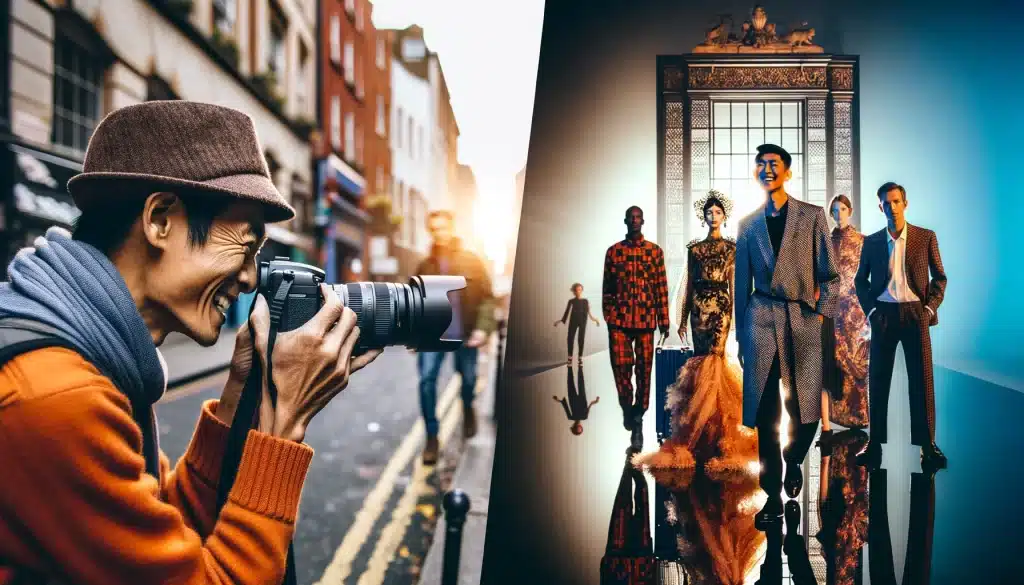
Exploring magazine photography often leads to the comparison between editorial and fashion photography. While both styles appear in magazines and involve high levels of creativity, their purposes and approaches differ significantly.
Purpose and Context
Editorial images: They often tell a story or discuss an issue within the context of a magazine article. These images are designed to complement the text, providing a deeper understanding of the story or theme. They are key in engaging the audience intellectually and emotionally. Photographers frequently use Adobe Lightroom to subtly enhance the mood without overpowering the story.
Fashion Photos: In contrast, fashion photography focuses primarily on clothing and accessories. It is used to showcase fashion items and trends in a visually appealing way, often without any narrative context. The primary goal is to captivate potential buyers through striking imagery that highlights style and design.
Techniques and Presentation
Editorial images: They are usually less staged compared to fashion shots. They aim to appear more natural and are often shot in real-world settings to enhance the storytelling. This allows the photos to resonate more authentically with the viewer, reflecting real-life scenarios.
Fashion photos: They are typically more stylized, with elaborate setups and lighting. They focus on aesthetics and detail to highlight the beauty and artistry of the fashion pieces. The meticulous attention to lighting, makeup, and setting crafts an idealized image. Adobe Photoshop is often indispensable here for its advanced editing capabilities that perfect the details of each garment.
Editorial vs. Commercial Photography
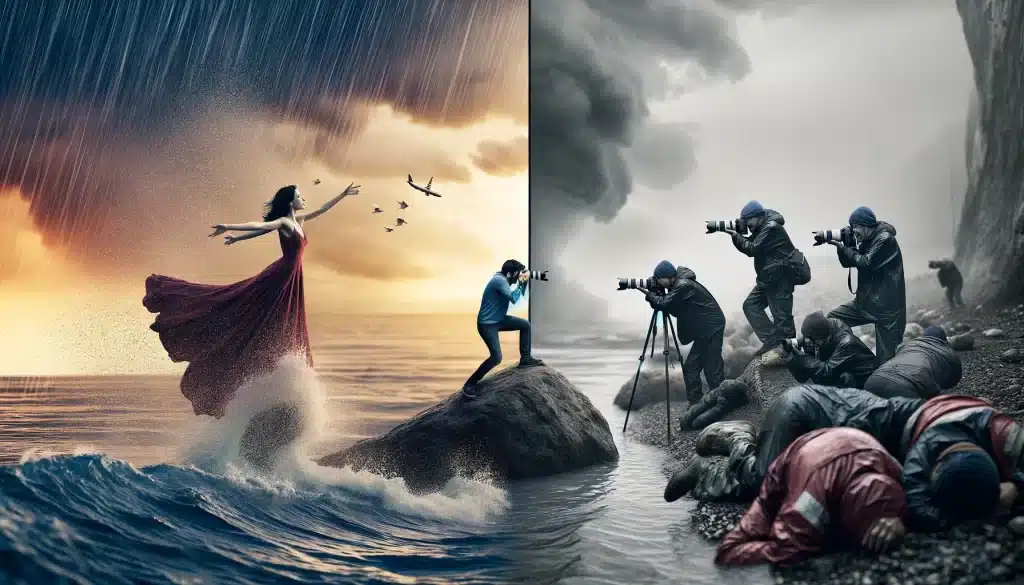
Understanding the following differences not only helps in appreciating the depth of the guide to publication photography—but also in recognizing the distinct roles these styles play in the world of photography.
Purpose and Context
Editorial photography: It is about storytelling. It supports the content of publications like magazines and newspapers, focusing on enhancing the narrative or theme of the written word. This type of photography often captures moments in sports photography or events that have a compelling story behind them.
Commercial photography: Its main goal is to advertise or sell products or services. This includes retail photography, where the imagery is designed to attract consumers and promote sales through catalogs, billboards, or online ads.
Techniques and Settings
Editorial Photos: In editorial photography, photography lighting is used to evoke a certain mood or emotion, aligning with the story being told. The lighting choices are less about showcasing a product and more about adding depth to the editorial narrative.
Commercial Photos: Snow photography is a best example of how environmental elements can be used in commercial photography to create appealing seasonal marketing materials. The pristine, white background of snow can make products stand out, which is perfect for winter-related promotional campaigns.
Editorial Photography vs. Photojournalism
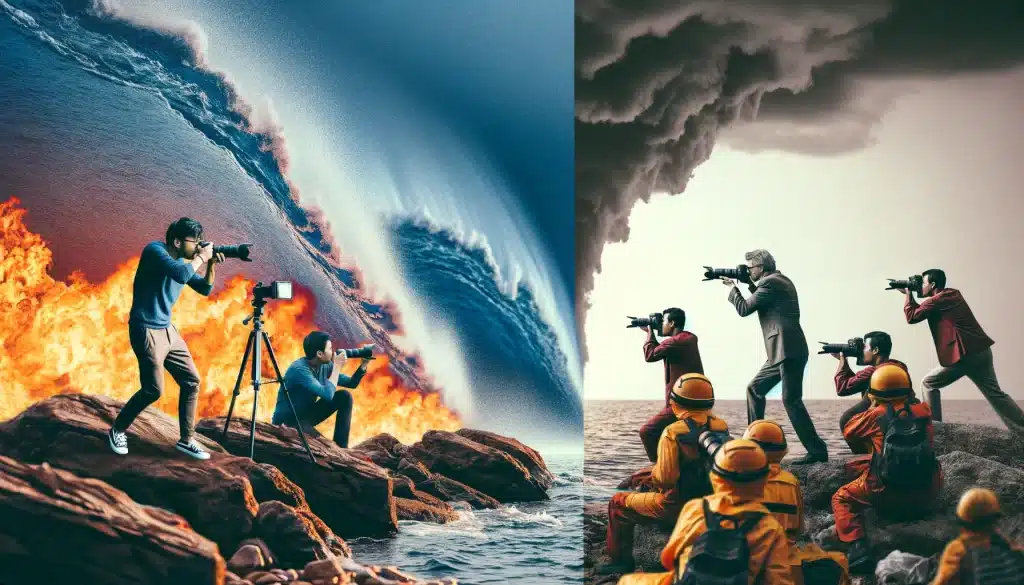
What is Editorial Photography in Comparison to Photojournalism?
While exploring the world of capturing images, one might ask, “What is Editorial Photography?” Unlike photojournalism, which strictly aims to present facts and reality, editorial photography complements narratives in magazines and books.
In editorial photography, a photographer may set a scene to capture an emotional response, such as a staged, sad encounter in seascape photography, where the dramatic background increases the thematic elements of the story. This approach allows photographers to manipulate elements like lighting and composition to evoke specific feelings or themes associated with the written content.
Basics of Photojournalism
Photojournalism represents a commitment to objectivity, focusing on truthful, direct reporting of events as they unfold. For example, a photojournalist covering environmental issues might use wildlife photography to present the impacts of climate change on ecosystems, aiming to inform rather than persuade.
Editorial photography serves the art of the story, providing a visual interpretation that enhances the reader’s experience of the narrative. It is less about capturing news and more about enriching the reader’s understanding and engagement with the subject matter.
| Feature | Editorial Photography | Photojournalism |
|---|---|---|
| Purpose | Enhance narrative | Report facts |
| Creative Freedom | High | Limited |
| Typical Use | Magazines, Books | News media |
| Focus on Aesthetics | Yes | No |
| Example | Artistic seascape shots | Natural disaster coverage |
Insights into Professional Editorial Imaging
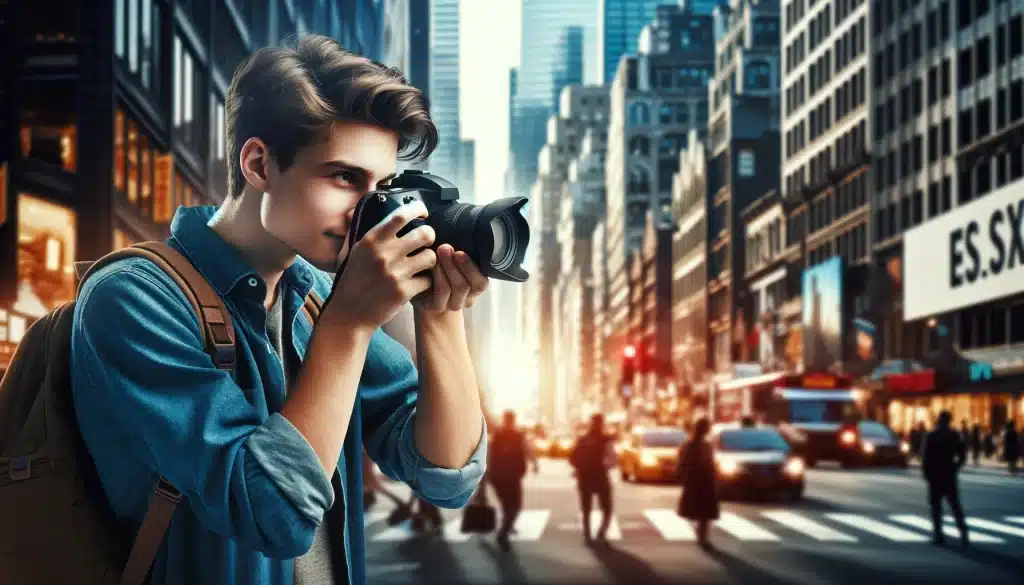
How to Start a Career as an Editorial Photographer?
If you’re curious about pursuing a career in photography, you might ask, “What is editorial photography?” This field involves creating editorial images that complement and enhance articles in magazines, newspapers, and online platforms. It’s not just about capturing any scene; it’s about telling a story that aligns with the words on the page.
Learning and Practicing
The first step is to practice taking editorial images. Start by photographing everyday scenes around you, trying to capture moments that tell a story. This could be anything from a bustling market to a quiet moment at home. Each photo should have a narrative, much like the stories you find in your favorite magazine.
Seeking Guidance
It’s also helpful to work under a more experienced photographer. This mentorship can provide insight into the shade of capturing editorial images that speak louder than words. By observing a professional, you learn not only about the technical aspects of photography but also about how to convey emotions and stories through your work.
Building a Portfolio
The collection of editorial images should highlight your ability to weave narratives through visuals. Share your portfolio online or in local art shows to get feedback and make connections.
Expanding Your Network
Lastly, networking is crucial. Connect with other photographers, join photography groups, and participate in workshops. Each connection is a potential opportunity to learn and grow in your career as an editorial photographer.
The Process of Creating Editorial Photography
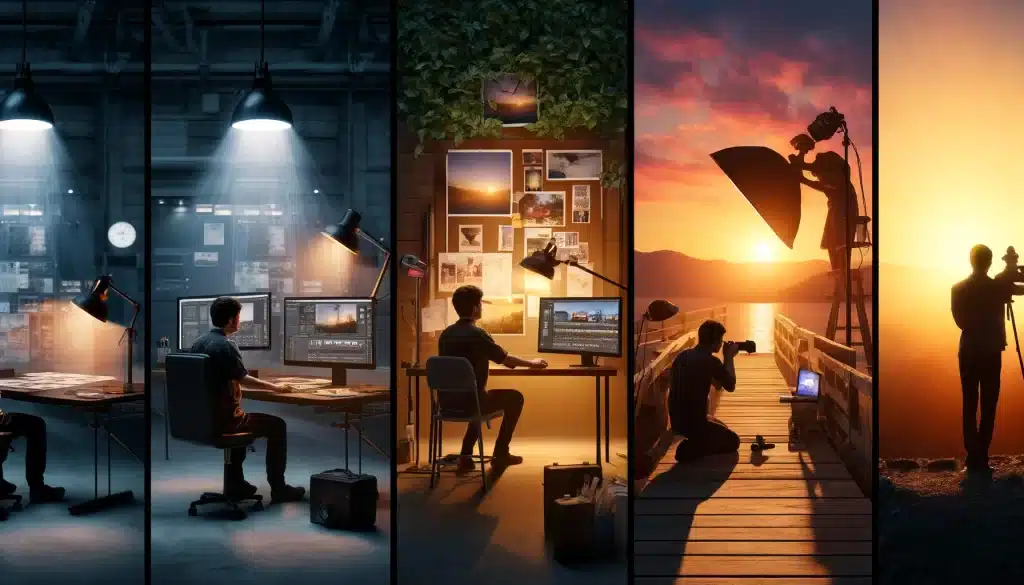
Creating editorial photography is an exciting process that blends artistic vision with meticulous planning. Here’s how professional photographers typically approach the task:
Planning the Shoot
First, the photographer sets the scene. They choose the best location based on the story’s theme and the desired mood of the images. Selecting the right set involves considering the light conditions (like low-light conditions) and the time of day that will complement the shoot. Early morning or late afternoon are often preferred for the soft, natural light they offer.
Setting Up
The photographer prepares their camera and other equipment for shooting. This might include various lenses, tripods, and possibly lighting tools if natural light isn’t enough. It’s important to have everything ready and set up before the shoot begins to make efficient use of the time. To shot at night, photographer also prepares setting for long expoure photography.
Post-Production
After the shoot, the editing process starts. This is when the photographer uses software to adjust colors, contrast, and details to enhance the final images. The goal is to strengthen the narrative told through the pictures, ensuring that the final work reflects the initial vision.
Popular Themes and Subjects in Editorial Photography
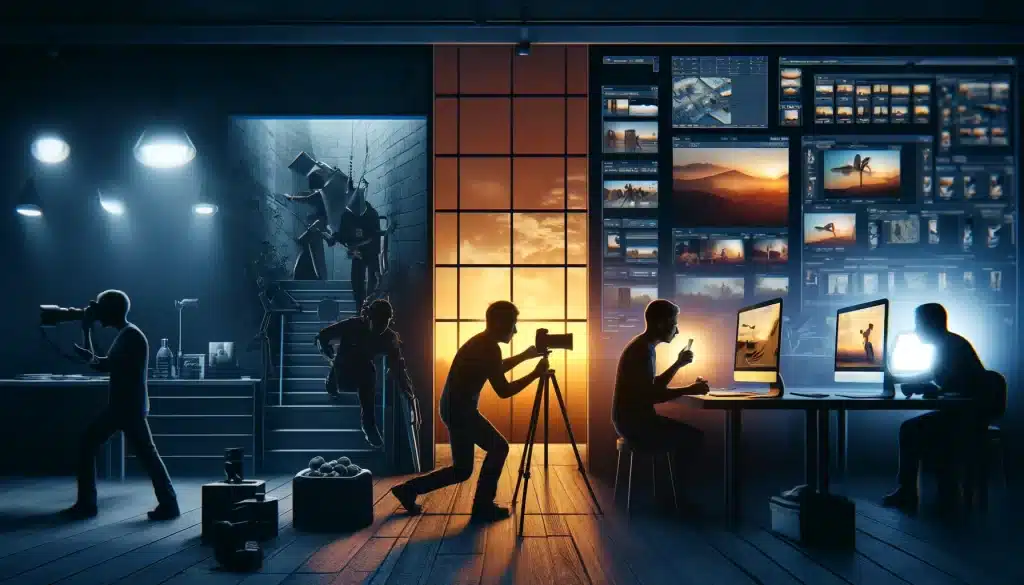
Exploring Common Themes
This domain covers a wide range of themes, each chosen to enhance the story being told in print or online media. One popular theme is human interest, where editorial photos capture personal stories or everyday life events that resonate with viewers.
Another common theme is social issues, highlighting topics like environmental concerns or public demonstrations, providing a visual entry point into discussions that matter to society.
Favorite Subjects for Editorial Images
Certain subjects stand out for their visual impact and storytelling potential. Urban landscapes are a favorite, showcasing the architecture and street life of cities around the world.
These editorial images help convey the pace and lifestyle of urban environments. Nature and wildlife also make compelling subjects, offering a look into areas untouched by human hands or focusing on the beauty and struggle of wildlife.
Technology's Role in Editorial Photography
The advancement of digital cameras and mirrorless cameras has significantly influenced editorial photography. These modern tools allow photographers to capture sharper images in various lighting conditions, making it easier to convey the mood and message of the story.
Digital cameras offer versatility and ease of use, while mirrorless cameras provide excellent image quality in a more compact form, perfect for photographers on the move who need to capture fast-paced action or quiet moments with equal clarity.
Legal and Ethical Considerations in Editorial Photography
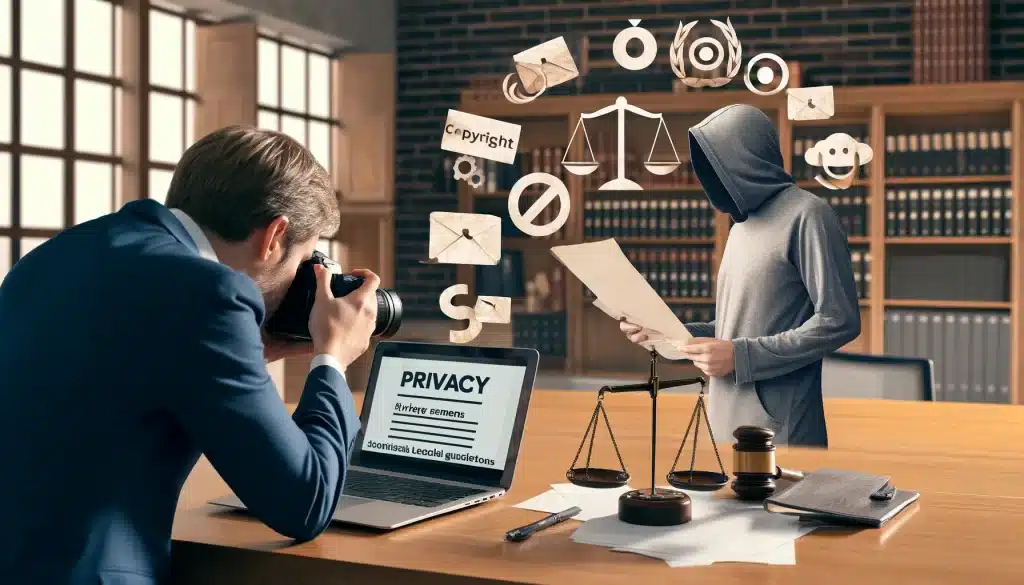
When engaging in editorial photography, it is crucial to consider the legal implications of photographing people, especially when the images are intended for commercial use. Obtaining proper model releases from individuals captured in photographs is a must, as it protects the photographer and the brand from potential legal disputes over privacy and likeness rights. Additionally, using images that include recognizable faces or distinctive features without consent can significantly harm the brand’s reputation and lead to legal challenges.
Ethically, photographers must respect the dignity and rights of the people they photograph, ensuring that the portrayal does not harm or exploit the individual. This respect is particularly important when dealing with vulnerable subjects or sensitive situations. Ethical considerations also extend to being truthful and not altering the photographs in a way that misleads viewers or misrepresents the subject. Such practices not only uphold the photographer’s integrity but also maintain the trustworthiness of the brand they represent.
Lastly, it is great to consider the broader impact of editorial photography on society. Photographs have the power to influence public perception and can play a significant role in shaping cultural and social attitudes. Therefore, photographers should strive to produce work that offers a genuine and insightful representation, ensuring that their approach is both legally sound and ethically solid. This practice not only contributes positively to the brand and its audience but also upholds a high standard of professionalism in the realm of editorial photography.
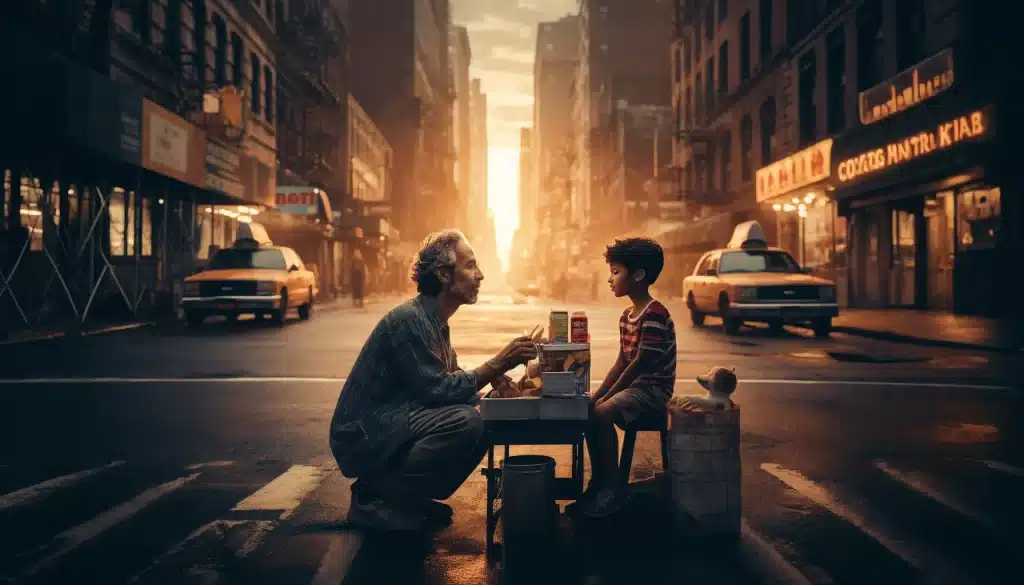
Frequently Asked Questions
What is editorial style of photography?
Editorial style photography is used primarily for publication in magazines, newspapers, and online platforms, focusing on storytelling and thematic visuals. It often accompanies text and is designed to illustrate or enhance the narrative of written content. This style is more about conveying ideas, emotions, and a deeper understanding of the subject, rather than just aesthetic appeal.
What is an example of editorial photography?
Examples of editorial photography include compelling images of everyday life, significant events, fashion editorials, and features of new technologies or cultures. These pictures can showcase everything from a bustling wedding scene to the calm, free moments before a major event, offering a snapshot of various human experiences.
What can editorial photos be used for?
Editorial photography is primarily used in magazines, newspapers, and online platforms to enhance and illustrate stories and articles. These photographs help bring narratives to life, providing a visual context that engages readers and offers a deeper understanding of the content. They are especially useful in documenting the essence of events, showcasing team dynamics, or highlighting important issues.
How to be an editorial photographer?
To become an editorial photographer, start by building a strong portfolio that showcases your ability to tell stories through images. Networking with magazine editors, writers, and art directors is crucial to getting assignments and exposure in the industry. Continuously improve your skills in both photography and understanding current trends and narratives relevant to potential publications.
Conclusion
As someone who has navigated the exciting world of editorial photography, I can personally attest to the transformative power of capturing the right moment. For example, during an early morning shoot in the bustling streets of New York, I managed to capture a fleeting interaction between a street vendor and a child. This image, which later accompanied a feature on urban life, not only enriched the article but also underscored the human element that often goes unnoticed. Such experiences highlight the critical role of context and emotion in editorial photography.
Whether you’re a beginner looking to understand the basics or a seasoned professional, our Photoshop Course and Lightroom Course offer valuable insights and practical knowledge to enhance your photography.
Have a nice photoshoot!
Learn more about



